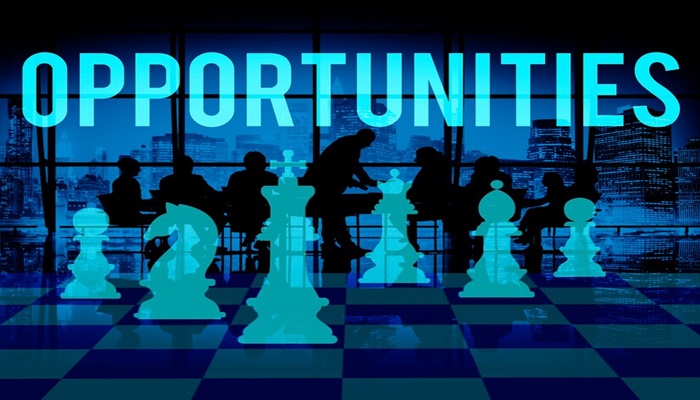The truth is organisations can no longer afford to treat performance management and talent development as separate functions. Yet in many workplaces, these two pillars of people strategy remain disconnected—leading to missed opportunities, wasted potential, and fragmented employee experiences.
The stakes are high. If performance reviews become isolated, backward-looking exercises, and development plans float detached from business strategy, organisations risk losing sight of their most valuable asset: people. The key to future readiness lies in creating an integrated system—one where performance insights inform talent planning, and development efforts actively shape future performance.
So, how can companies truly bridge this gap? People Matters spoke with senior HR leaders who are at the forefront of aligning performance and talent systems. Their insights reveal not only the challenges but also proven strategies to create an ecosystem where both functions reinforce each other to drive capability, growth, and business value.
The disconnect
One of the core challenges, as Shirin Salis, Vice President – Human Resources at Trane Technologies, puts it, is the ritualistic nature of current systems. “Performance reviews and talent assessments are often treated as separate annual rituals,” she notes. “But in a fast-changing technological landscape, where goals and talent requirements shift quickly, we need a more flexible, interconnected approach.”
Often, performance and development live on different systems, with no unified view of progress, potential, or skill gaps. Without a continuous data loop, talent teams struggle to design meaningful interventions, and line managers lack the insight to support growth conversations effectively. The result? Employee development efforts become reactive, generic, and in many cases, ineffective.
But the problem isn’t just technical. According to Mohit Sharma, CHRO at EKA Mobility, there’s a strategic imbalance in focus. “Performance management often prioritises business metrics—financials, customer outcomes, process efficiency—while people-related goals receive less attention,” he says. “This naturally sidelines employee development.”
And when development is treated as an afterthought, Individual Development Plans (IDPs) become little more than checkboxes. “The IDP often runs as a standalone activity, disconnected from performance outcomes,” Sharma adds. “This fragmentation means development doesn’t feed into performance—and vice versa.”
Moreover, most organisations struggle with systematic skill-gap identification. In fast-changing industries, capability needs evolve every quarter. Without real-time mapping of current skills versus future demands, development plans either overshoot or undershoot actual needs.
The power of data and analytics
To truly integrate these systems, organisations must harness the power of data—moving from gut feel to evidence-based decision-making. Indranil Choudhury, Group President and Group Head – Human Resources at UTI AMC, offers a compelling case.
“We use a range of sources—Development Centres, performance scores, TNA [Training Needs Analysis] data—to design individualised learning journeys,” he shares. “These insights then drive a targeted training calendar aligned with role readiness and business needs.”
The beauty of this approach is that it creates a closed-loop system: performance insights feed development, which in turn strengthens future performance, and both sets of data inform succession planning.
At RBL Bank, Vishal Kukreja, Head – Human Resources, echoes this thinking. “Data allows us to bridge the gap between evaluation and development. We analyse performance trends, behavioural patterns, skill assessments, and even career aspirations,” he says.
This intelligence is then used to craft data-driven career paths, reduce bias in promotion decisions, and accelerate internal mobility. “The objectivity introduced through analytics makes a real difference in aligning performance outcomes with long-term talent strategy,” Kukreja adds.
While systems, data, and frameworks matter, none of it works without leadership buy-in. It is the behaviour of managers and senior leaders that determines whether performance discussions become routine check-ins—or catalysts for career transformation.
According to Mohit Sharma, there are four key responsibilities for leaders in this context:
- Cascading Organisational Goals: Leaders must break down high-level objectives into team and individual goals, so every employee understands their impact.
- Normalising Holistic Evaluation: Assessment must go beyond the ‘what’ and include the ‘how’—measuring values, collaboration, and leadership behaviours.
- Prioritising Developmental Conversations: Reviews should not be limited to the past. They must open up forward-looking conversations about skills, aspirations, and readiness for future roles.
- Facilitating Transparent Career Dialogues: Leaders should use both performance and development data to conduct objective, aspirational conversations about career growth.
Tina Singh, HR Director at Clavrit Digital Solutions, adds another layer: “Leadership is the linchpin. Evaluations should be seen not as endpoints, but as roadmaps for future development. That mindset shift—turning feedback into opportunity—is what really changes culture.”
This cultural shift is vital. When leaders embrace ongoing feedback and see development as a strategic advantage—not a ‘nice to have’—they model the behaviours that foster learning, resilience, and innovation across the board.
Real-world integration in action
Several companies have already taken bold steps to bring this alignment to life—and the results speak for themselves.
At UTI AMC, Choudhury explains how they built an integrated talent dashboard that merges data from performance management, Development Centres, and succession planning.
“This unified view allows us to make real-time decisions on talent deployment, internal moves, and leadership development,” he shares. “We don’t wait for roles to open—we develop talent in advance. The result is a stronger, more visible leadership pipeline.”
UTI AMC also links its learning programmes directly to role competencies and future readiness. Employees aren’t just being trained—they’re being prepared for what comes next.
Similarly, at RBL Bank, FY23 marked a turning point in their approach. “We redesigned our performance framework to embed structured development discussions, introduced skill-based progression tracks, and made internal mobility a key metric,” says Kukreja.
The outcomes? Lower attrition, higher employee engagement, and increased internal movement. “People now understand not just where they are, but where they can go—and how to get there,” he adds. This shift hasn’t only benefited employees—it’s strengthened customer relationships, reduced hiring costs, and reinforced the culture.
Six steps to a unified people strategy
For organisations looking to replicate this success, here are six strategic moves that HR leaders recommend:
- Break Down Silos: Ensure performance management, talent development, and succession planning are connected—not just in tech systems, but in processes and conversations.
- Build a Shared Talent Language: Use common frameworks for competencies, skill levels, and readiness to enable consistency across evaluations and development.
- Make Data Actionable: Invest in analytics that do more than visualise metrics—ensure they drive real decisions around learning, movement, and advancement.
- Upskill Managers as Coaches: Equip managers to lead growth-oriented conversations—not just rate performance.
- Tailor Development to Role Needs: Align learning interventions with both current responsibilities and future aspirations.
- Track Impact, Not Activity: Measure success through improved performance, increased mobility, leadership pipeline strength, and business outcomes—not just training hours.
The future belongs to organisations that see performance and development not as checklists, but as two sides of the same coin. Integration is no longer optional—it’s a competitive differentiator. It’s what transforms performance conversations from looking in the rear-view mirror to charting the road ahead. And it’s what allows employees not just to deliver—but to thrive, grow, and lead.
As these HR leaders have shown, this transformation is not just possible—it’s already happening. The question for your organisation is: Will you catch up—or lead the way?





















